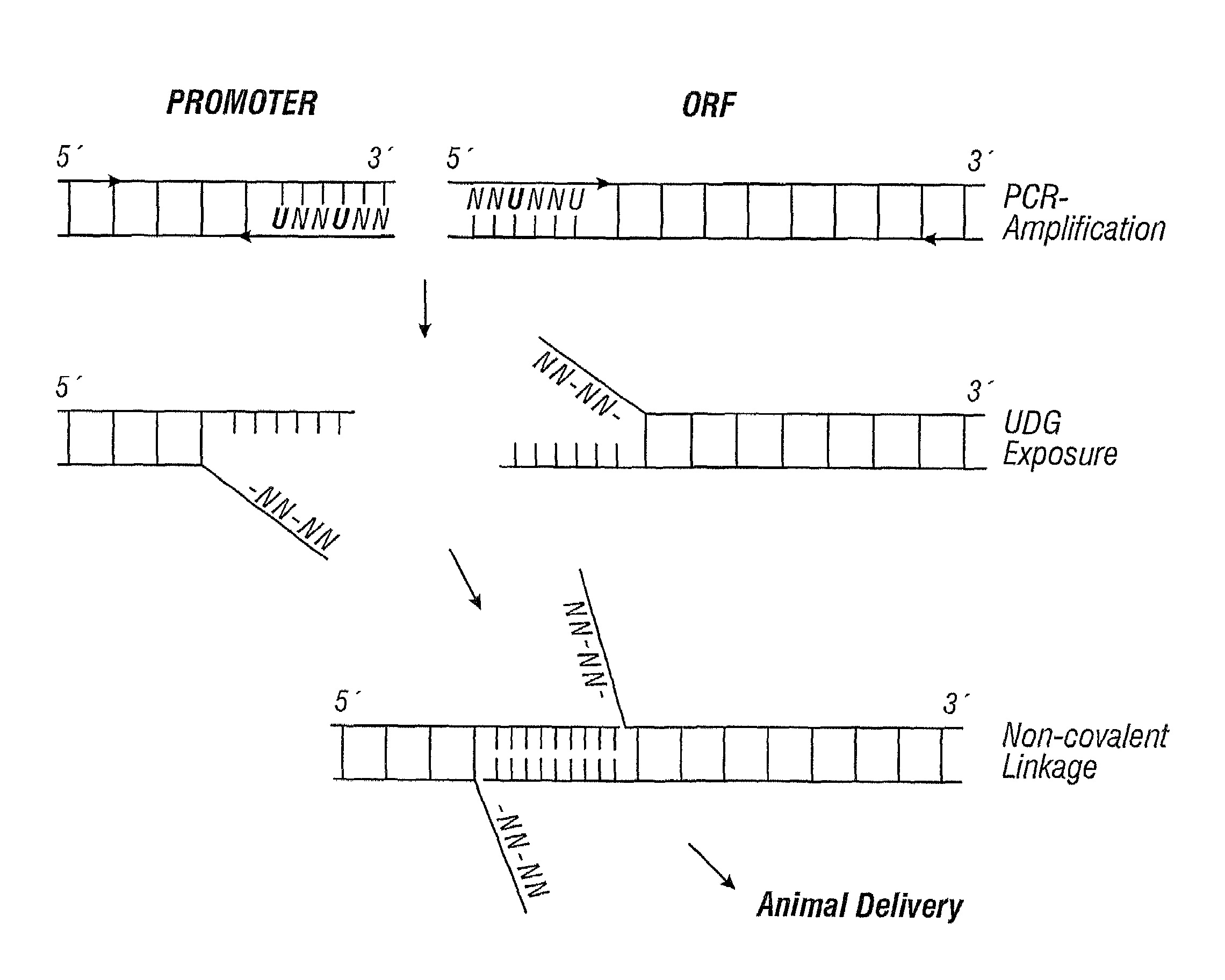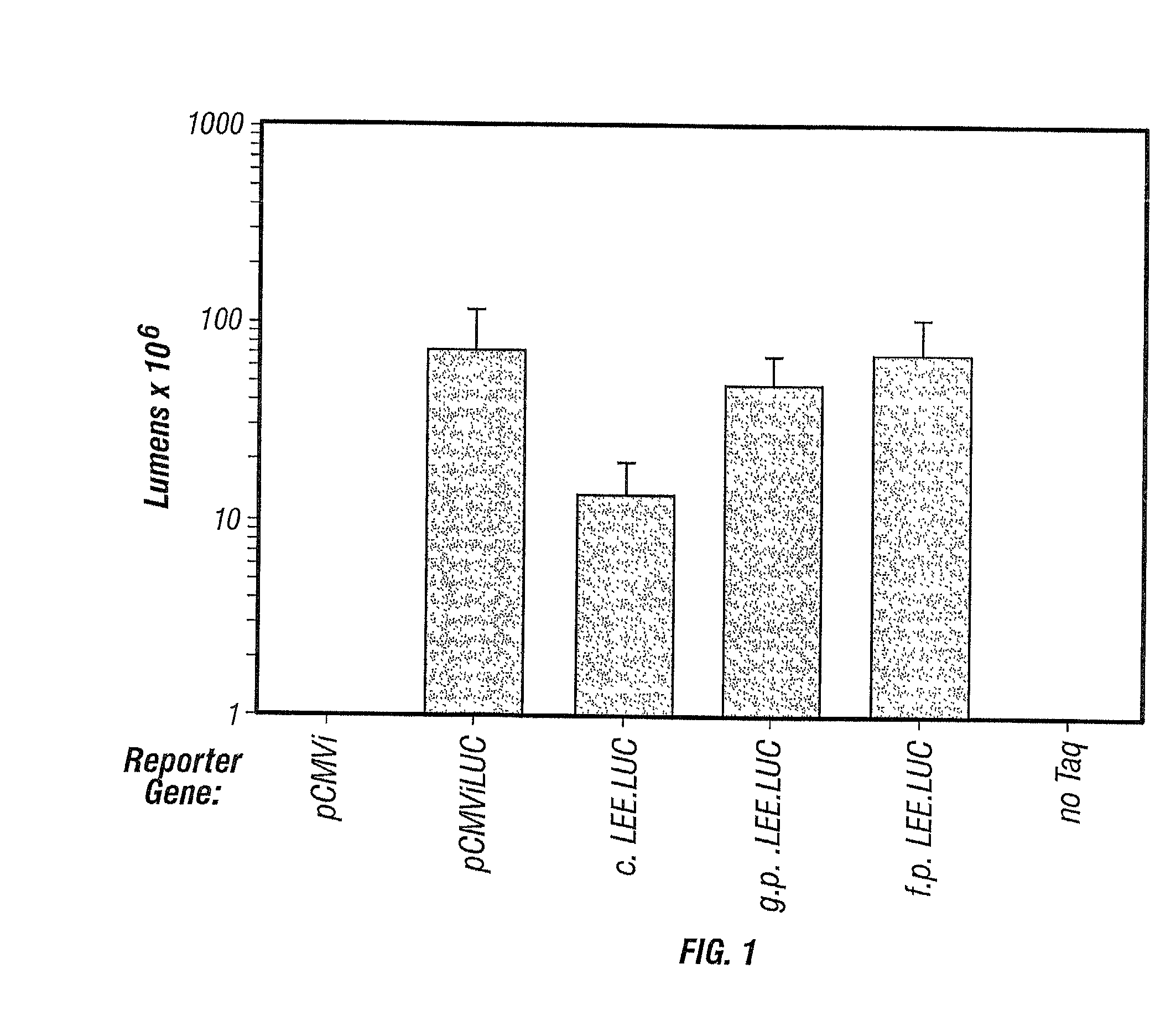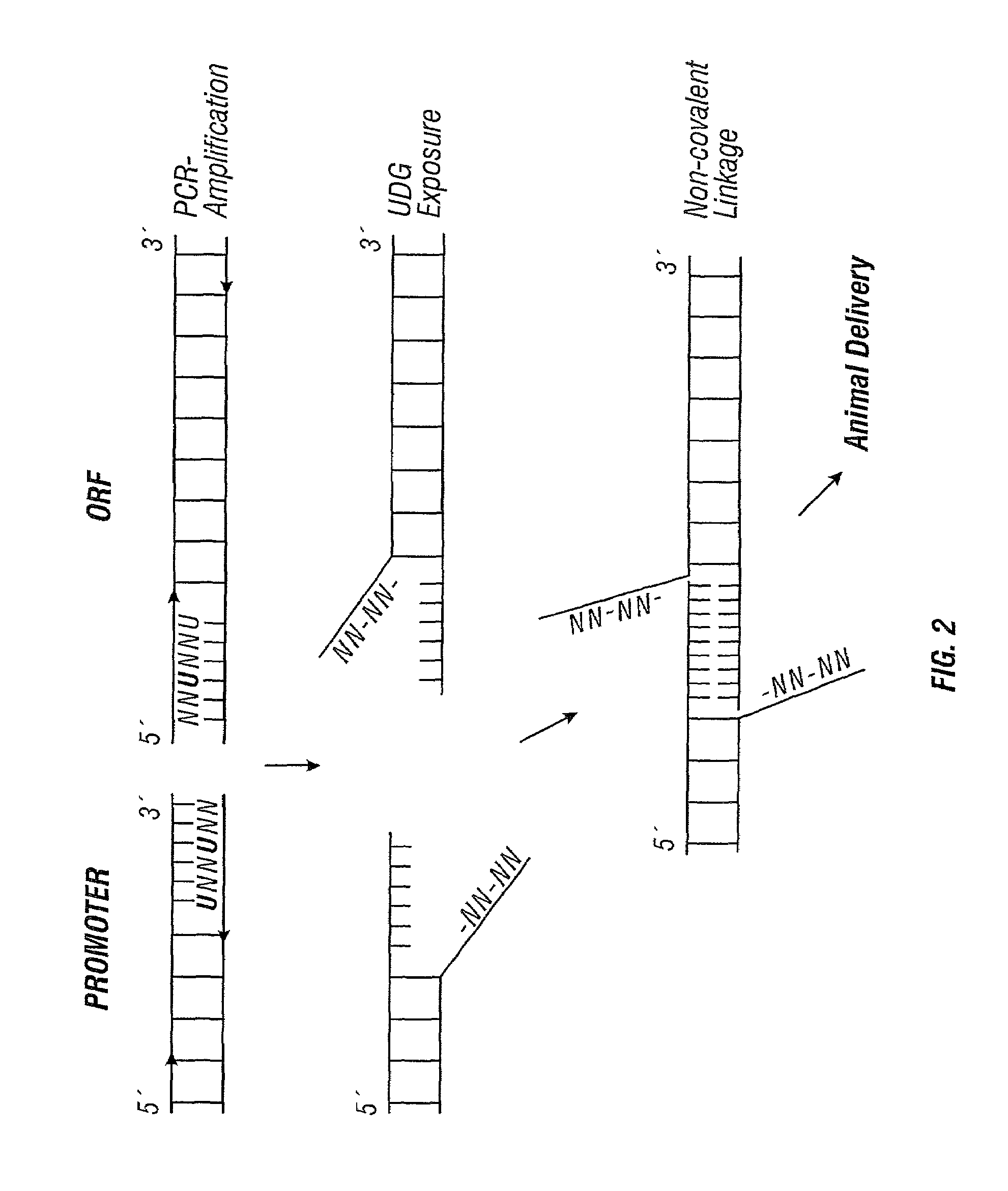Linear and circular expression elements
a technology of expression elements and lines, applied in the field of molecular biology and functional genomics, can solve the problems of prohibitive time and expense of preparing appropriate reagents from them, and cloning thousands of genes from each pathogen
- Summary
- Abstract
- Description
- Claims
- Application Information
AI Technical Summary
Benefits of technology
Problems solved by technology
Method used
Image
Examples
example 1
Description of Plasmids and LEES
[0271]To construct the inventors' standard reporter plasmid, pCMViLUC, the luciferase-encoding LUC+ gene from pGL3-basic (Promega, Inc.) was inserted as an MluI / XbaI fragment into expression vector pCMV-5 (Andersson et al., 1989), and a chimeric intron from pCI (Promega, Inc.) was added as a SacI / EcoRI fragment.
[0272]The complete 3.4 kb LEE.LUC was built by PCR®-amplifying the CMVi promoter, luciferase coding sequence, and hGH terminator from plasmid template pCMViLUC by standard protocols (Perkin-Elmer, Inc.). Two standard 20-mer primers were used that correspond to the 5′ and 3′ ends of the promoter and terminator regions, nucleotide positions 151 and 1590, respectively, of pCMV-5. The LEE components were built by separately PCR®-amplifying the CMVi promoter, a coding sequence, or hGH terminator from plasmid templates by standard protocols (Perkin-Elmer, Inc.). Primers were synthesized with standard phosphoramidites except, when indicated, five dU r...
example 2
Efficient Expression of a Linear Expression Element in Animals
[0275]An amplification product was produced containing a cytomegalovirus promoter (CMVi), a luciferase reporter gene (LUC), and the human growth hormone gene terminator (hGH). This in vitro-produced, non-replicating LEE was precipitated onto gold microprojectiles and shot with a gene gun (Sanford et al., 1991) into mouse ears. For comparison, a molar equivalent of the LUC gene with the same promoter and terminator was delivered on a supercoiled plasmid (pCMViLUC), and the skin tissues were assayed for luciferase activity 24 to 36 h later (FIG. 1).
[0276]The standard supercoiled LUC plasmid generated an average of 7.3×107 lumens per bombarded ear. Background luminescence from tissue bombarded with empty plasmid (pCMVi) was no higher than untreated tissue or sample blanks.
[0277]Reporter gene activity produced from a crude PCR® reaction containing the product that encodes luciferase (LEE.LUC) was 19% of the standard activity....
example 3
Production of Linked LEES
[0278]The data reported in Example 2 demonstrate that gene expression levels from a PCR® product encoding a complete gene are similar to that from a conventional plasmid. However, while direct amplification of whole genes will be useful for a number of applications, it will not always be possible to amplify contiguous promoter, ORF, and terminator sequences. For example, most gene screening assays will require fusing a common promoter to a variety of ORFs, or a reporter ORF to a variety of promoters. Screening microbial genes in mammalian cells would require fusing the prokaryotic ORFs to a eukaryotic promoter and terminator. Therefore, an ideal LEE system will typically involve amplification of only an ORF which would then be linked to a set of standard promoter and terminator sequences.
[0279]To resolve the above issues, the inventors developed a strategy to produce complementary single-stranded overhangs on the ends of separate PCR® products carrying the O...
PUM
| Property | Measurement | Unit |
|---|---|---|
| temperatures | aaaaa | aaaaa |
| temperatures | aaaaa | aaaaa |
| concentration | aaaaa | aaaaa |
Abstract
Description
Claims
Application Information
 Login to View More
Login to View More - R&D
- Intellectual Property
- Life Sciences
- Materials
- Tech Scout
- Unparalleled Data Quality
- Higher Quality Content
- 60% Fewer Hallucinations
Browse by: Latest US Patents, China's latest patents, Technical Efficacy Thesaurus, Application Domain, Technology Topic, Popular Technical Reports.
© 2025 PatSnap. All rights reserved.Legal|Privacy policy|Modern Slavery Act Transparency Statement|Sitemap|About US| Contact US: help@patsnap.com



